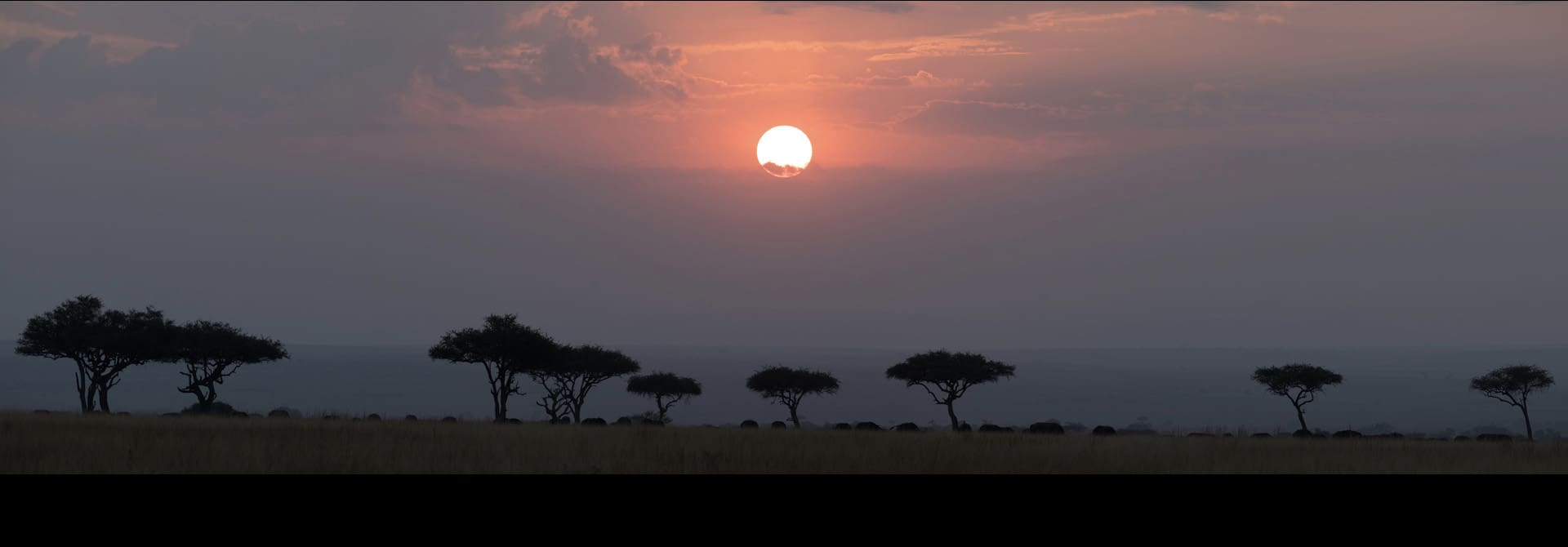One of my favorite types of photographic adventures is the wildlife photo safari in Africa. In anticipation of my next Kenya Photo Safari and the fact that migration season is upon us, now seems like a good time to give you my Safari photography tips.
The following is my top 12 tips for shooting on Safari, but these tips also work well with a wide variety of other locations and subjects.
1. Get out early
Good things happen in the morning and you need to be there if you want to capture them. Animals are active in the early morning hours when it’s a cooler temperature. Most safari operators will have early game drives that start at 7am or earlier, as this is when it’s best to see the wildlife, but it’s also more comfortable for people too. If you have the option, try to be on the road as soon as it’s light enough to photograph.
2. Camera ready at all times
You never know when the next great moment is going to happen so you need to be ready at all times. This means knowing how your camera works, what mode it is in and whether the settings you have set now are best for what’s likely to happen next.

3. Always be looking
When you are in the middle of the savanna, animal action can happen anywhere around you. You may be watching a herd of zebras and behind you may be a cheetah lurking in the tall grass. Observant eyes will pick up small, distant, and camouflaged animals that may prove to be prize photographic opportunities. Try to hold your head and eyes very still so that you might perceive animal movement more easily. Scan the landscape and look for that odd element that looks out of place.

4. Shoot from downwind
Animals are keen to the world in ways that are hard for us to imagine. Scent is one of the key ways in which a variety of animals determine dangers. A good safari guide will be aware of this, but it doesn’t hurt to check this out yourself. In the heat of the moment this is one of those small details that can ruin a good opportunity.
5. Try the unconventional
Make use of an unusual composition or extreme close-up to create a different take on the typical wildlife photo. You’ll be a bit constrained to choosing a unique point of view as you won’t be able to exit your safari vehicle. Instead you’ll have to rely on creative thinking and perhaps a longer lens to get in even closer for a detailed and possible abstract image.

6. Move to where the animals are going
A photo of an animal moving toward the camera is much more appealing than one walking away, so get yourself in the right position to capture it. Chasing animals from behind to get a photograph is wrong for many different reasons. By placing yourself in front of where the animal is going, you give it a choice of options. If it feels comfortable with the direction it’s going, you get a great shot comfortable to the world around it. If it doesn’t like the situation, it can turn away and go another direction.
7. Don’t shoot bullseye
Lots of things can be going through your mind when you are in the midst of a great shot. A primary fear for everyone would be “missing” the shot in some way. Because of this many people will center their subject in frame, so as not to miss any part of that subject. This will also happen with subjects that are far away and small in the frame.
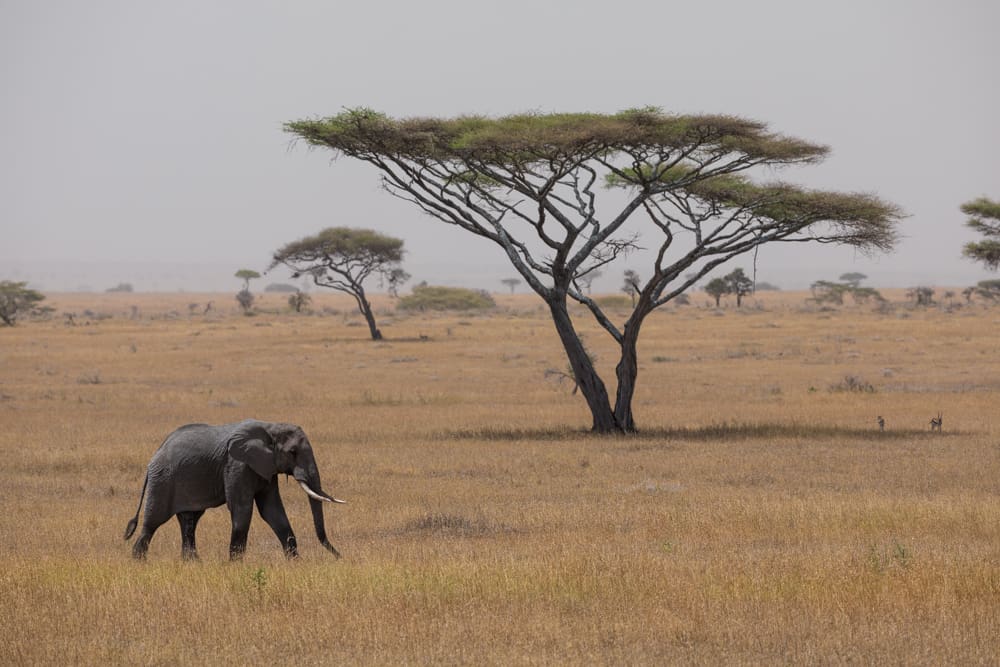
You must resist the urge to place your subject in the middle of the frame, unless there is a good reason for it. As they say in the theatre, use the space. If you can find a compositional reason for placing your subject outside the bullseye middle of the frame, go for it. If an animal is walking left to right, give it a bit more space on the right so that it has some visual space to move. Use other elements of the environment to help frame your subject. Reach deep into your bag of compositional tricks to come up with a creative take to make a new and compelling image.
8. Clean & simple backgrounds
The highlight of any African safari will always be the wildlife, so let them be the star of the show. Seeing and photographing a beautiful animal is not enough, you have several other considerations. Very high up on the list of things to be on the lookout for is the background. Busy and cluttered backgrounds will distract from the subject. Work with your guide and driver to position yourself in such a way that the background isn’t a distraction. Look for clean, uncluttered spaces that allow your subject and its outline to be clearly seen as separate from the background.

9. Look out for non-animal scenes
Yes, animals are the highlight of any safari, but there are also large gaps in time between sightings, so fill that valuable Africa time with shooting some other subjects. This all harkens back to tip number 3, “Always be looking”, because you might as well take advantage of every opportunity that comes your way.
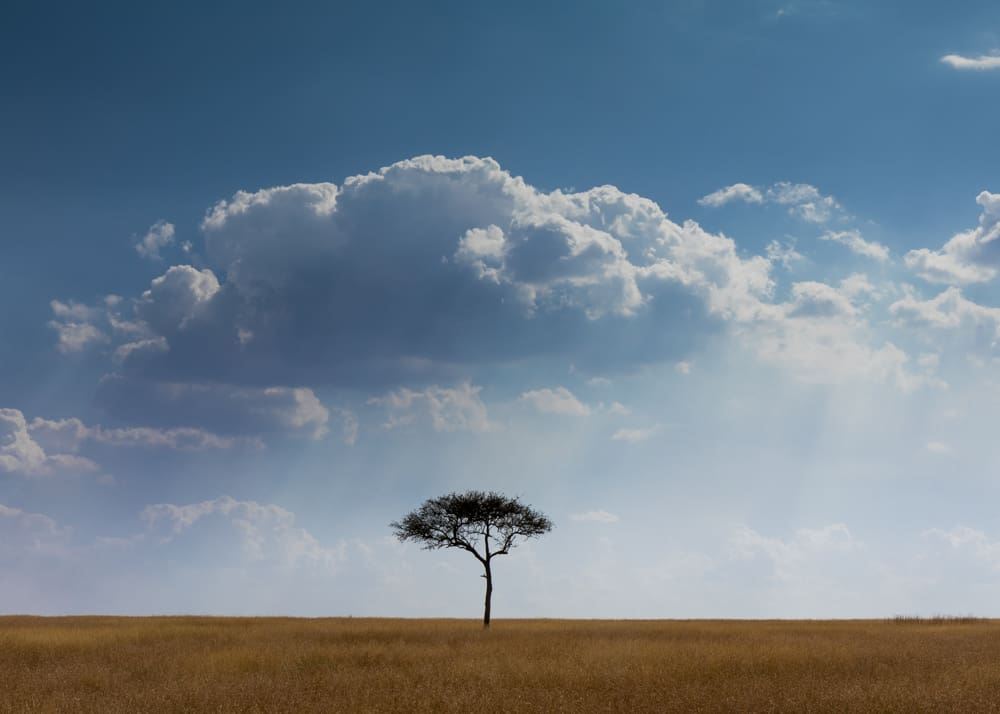
I’ll admit that beyond the animals there’s not a ton to photograph when you’re on the savanna, but I have found the trees and clouds do make for some interesting subjects. What will you discover with your eyes and imagination?
10. Shoot in good light
This one is easy to say, but hard to do. The good light in many African countries, or anywhere near the equator, occurs for a very short period of time; in these regions, the sun rises and sets very quickly. The golden hour for many populated regions of the world translates into the golden 20 minutes in Kenya. Staying in accommodation close to the action will have big payoffs in this regard.
It’s true that most tours offer morning and afternoon game drives that will give you a bit of good light, but there are steps you can take to maximize it. Request to be on location at sunrise or sunset so that you can get the most out of your 20 minutes of primetime. This might mean a bit of a drive in the dark but that’s a small price to pay for your shot of a lifetime.

11. Use the cameras silent mode
Many cameras offer silent modes that will reduce or eliminate the sound of a shutter release. Older DSLRs do this by slowing down the movement of mirror and newer mirrorless camera do it by using an electronic shutter. For most general shooting this will not negatively impact how the image is captured. See my article on electronic shutters for more on how they work.
The silent modes are not generally advised for action photography, for a variety of reasons, but they are also not really necessary in those situations either. For the average shooting experience while on safari this would be a good mode to have turned on.
It’s also worth stating that you need to be quiet as well. Move slowly and deliberately when you are in the vehicle. Dropping a lens cap, knocking over a water bottle or bumping your lens on the window frame are all things that can disrupt the animals, as well as others in your vehicle. Organize your space and gear with this in mind. When it comes time to shoot, have things set on your camera already so you can get into shooting position as smoothly and quietly as possible.
12. Focus on improvement
You often get multiple opportunities at capturing a particular animal. On your first encounter with a particular animal you’ll be excited to just get a basic photo it; and a basic photo at this point is fine. As you spend more time with the animal, either in one long session, or multiple shorter sessions, strive for an ever-improving collection of photos.
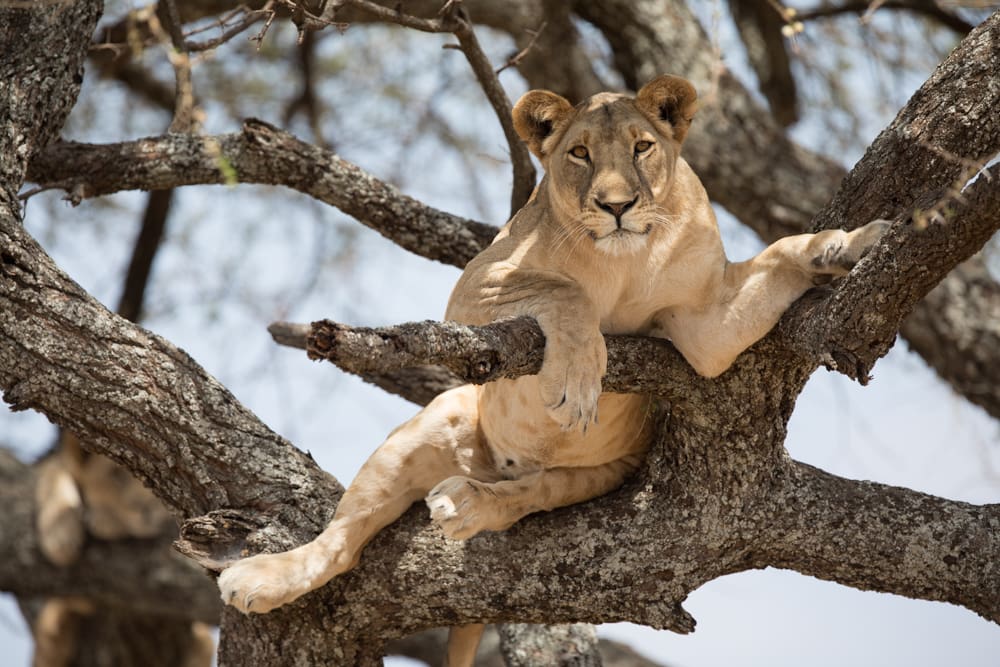
When you are photographing elephants for the umpteenth time, you shouldn’t waste your time, battery, or memory card shooting basic photos; you’ll likely already have heaps of them. At this point you should be more discriminating about what you shoot. Put more thought into what would make a better photo and what you can do to capture something that is new and better.
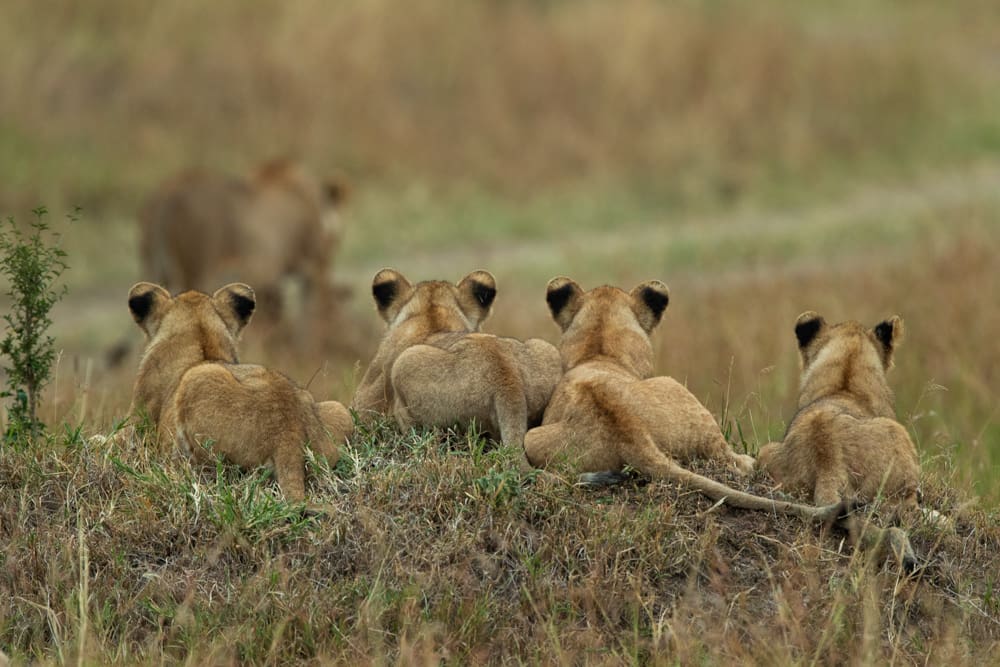
Final thoughts
Going on an African photo safari is an experience of a lifetime and one that will be cherished for years to come. If you’re keen to get great photos there are lots of basics that you’ll want to have under your belt for sure. A lot of what happens, and what could happen, are out of your control so you’ll need to lean on the few areas that you do have control over.
Get to know your camera, know the photographic essentials, maybe take a practice trip to the zoo or a wild animal park and you’ll be ready. Just don’t be that photographer that drops their lens cap on the metal floor of the Landrover just as everyone else is about to get that shot of the bird that landed on the head of your guide. Maybe that’s the reason I don’t carry or use lens caps.

Become part of John’s inner circle
Sign up for the newsletter here — it’s free.
Want to become a better photographer?
Check out John’s selection of photography and camera classes here.
